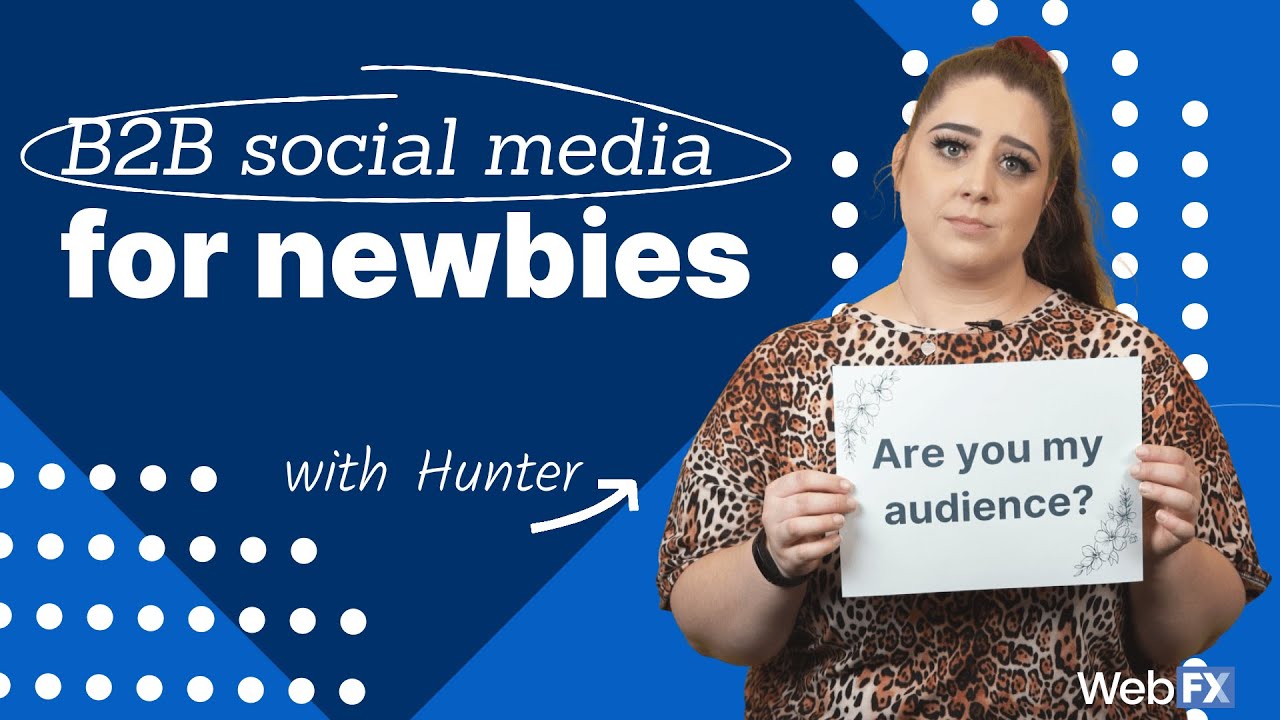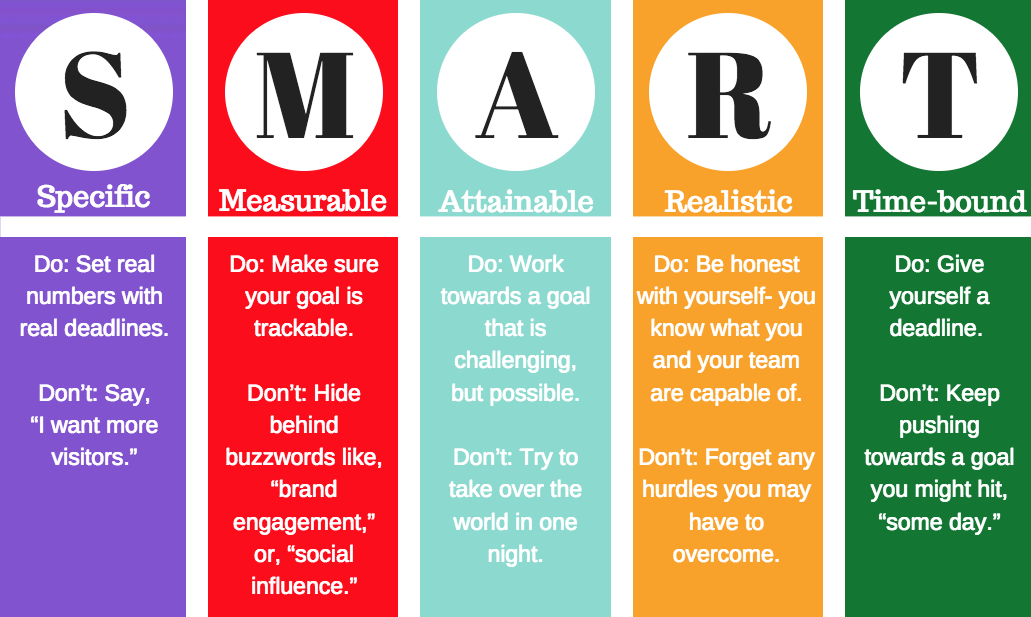B2B companies are proof that every company can succeed on social media. Why? Because they've converted a small businessthat isn't really exciting into a social content playground.
When I think of B2B organizations with strong social media presences, I think of IBM, Google, HubSpot, and a slew of others. These businesses are so good at sharing material that attracts and increases their audience that they don't seem too concerned with continually advertising their products or services.
To be effective on social media, a B2B company's content must strike a balance between being engaging and not interfering with their audience's experience on the site. To effectively benefit from social media, these businesses must first figure out what their target audience wants to see.
The landscape of what it means to be a brand on social media has been revolutionized by B2B enterprises. Consider the following tactics utilized in the B2B arena to engage and attract your own audience, which may lead to the success of your own social accounts.

How to Create an Awesome B2B Social Media Strategy
Set SMART Goals
To be successful, a social media strategy must be founded on goals, just like any other marketing channel. Defining defined, measurable KPIs for your company's social media — whether they're based on brand awareness or acquisition — will be the key to determining long-term success.
You must first decide what success means to your brand in order to determine KPIs. Are you attempting to leverage social media as a source of new customers? Do you wish to broaden your audience or improve the number of visitors to your company blog? This will determine the metrics to monitor.
If your company is seeking for leads, for example, metrics like clicks and conversions are crucial. It's more important to think about engagement, reach, and impressions when it comes to brand awareness.
Here's a good example of a SMART objective for a firm that is just getting started on social media:
Goal: to increase brand exposure through social media.
Specific
I want to increase brand awareness for our organization by posting on Twitter, Instagram, LinkedIn, and Facebook on a regular and frequent basis. I plan to boost our Twitter posting frequency from once to four times per day, daily Instagram posting, and weekly LinkedIn and Facebook publishing frequency from four to seven times each week. Our content creators' workload will be increased from two to three posts each week, while our designer's effort will be increased from one to two assets every week.
Measureable
Our goal is to boost engagement by 4% across the board.
Attainable
Last month, we raised our weekly posting frequency and spent more time on meaningful, compelling material, which increased our engagement rate by an average of 2%.
Relevant
Increasing engagement rates will raise brand awareness and produce more leads, allowing sales to clinch more deals.
Time Bound
End of this month is the deadline
SMART Goal
By the end of this month, we will have increased our average engagement rate across all of our social media channels by 4% by increasing our post frequency and focusing on intelligent, engaging material.
Keep A Close Eye On Your Rivals
Your competitor's marketing approach, or at the very least, their social media marketingstrategy, is accessible through social media. Keeping tabs on your competition is part of the job description for larger organizations. You want to know what campaigns they're conducting and how successful they are. If the target audience of that company is comparable to yours, you can acquire ideas from their campaign.
Keeping an eye on your competition on social media, though, isn't about replicating their tactics. Because you're both in the same industry, you'll have a lot in common with your audiences and their interests. If you see that your opponent isn't reacting to breaking news, it might be a good idea for your company to do so as well. Searching for these possibilities will set you apart from the competition.
Original Content Should Be Shared
To some, this may seem obvious, yet many businesses build their social media presence by curating material from other sources. The truth is that your audience can detect the difference between original and unique material and content that was simply provided to show you were active on the platform that day.
Make Use Of Several Types Of Media
When a social network introduces a new feature, social media marketers become excited because it gives them a new medium to experiment with and test with their audience. Instagram Stories, Twitter polls, and LinkedIn papers are all great examples of how touse each channel's particular multimedia formats. Creating and sharing multimedia material on your social media networks adds an element of intrigue that will help you capture the attention of your target audience.
Consider this: if you simply viewed text-based tweets while scrolling through Twitter, you'd rapidly become bored. Every Tweet is unique, which is why Twitter is so addictive. A meme, a poll, a movie, a photo collage, and a gif may all be found in a 10-second browse. The same is true for your company's feed.
You could also post employer brand videos, which you can find out more about in this guide. Take a look at some video examples so that you can get inspired and easily create your own. In addition to posting videos on professional social media sites, you can share them on careers pages and send them directly via email to prospective employees.
Your Staff Should Be Highlighted
Many B2B organizations excel at highlighting their staff, allowing the audience to put a face to the brand and personalize it. This is crucial for both small and large enterprises, because whether you're selling computers to businesses or operating a neighborhood eatery, people are the lifeblood of your operation.
Employer brandingcan also be accomplished by highlighting your staff. Employer brandingenhances employee advocacy by empowering them to disseminate the word about their workplace. Putting your employees on display can help you reach a wider audience and enhance engagement. Instead of uploading a photo of the product, you could publish a photo of the 20 people that developed it, which would likely be shared with those 20 people's networks.
Create A Distinct Brand Voice
Every time your organization publishes a blog, modifies a pillar page, or engages in social media activity, you have the opportunity to demonstrate your brand voice. Customers should be able to recognize your brand voice in the same way that they can remember your logo.
Your social material, like any other marketing product, should always reflect your company's viewpoint. Is it customary for your company to make light of problems or to offer advice?
Because it is so different from every other brand, Wendy's approach leaves a lasting impression on customers. However, you don't have to make fun of a competition to have a unique voice. Your brand's tone can be pleasant, casual, formal, sarcastic, amusing, serious, or any combination of the above.
Look back at previous blog posts or landing page copy if you're having trouble figuring out your brand voice. Take note of the copy's passion and tone, and strive to replicate it in your social messaging.
Having a distinct brand voice also allows you to stand out in an already competitive field.
Provide Assistance
Nothing is more aggravating than tweeting a brand about a customer serviceissue and getting no response. Even if you don't have the resources to develop a dedicated support account on Twitter, keeping an eye out for these concerns and responding promptly is an excellent approach to repair your client connection — and to show future consumers that you'll be there for them if a problem happens.
Maintain A Level Of Consistency
Consistency is one of the most difficult aspects of posting on social media. It takes a lot of work, content production, and planning to post to every single channel every day. Instead of posting every day, invest time crafting useful material that contributes to your audience's feeds if you're just getting started. It's preferable to send out a well-thought-out tweet that contributes to the debate and encourages interaction than it is to send out five short blog links with only the title of the post as the copy.
Experiment With Different Types Of Material And Posting Times
This is a step to take once you've demonstrated that you can keep up with a regular posting schedule and want to learn more about your audience. Although there are always best practices for when and what you should publish on social media, the truth is that every audience is different, so you'll need to experiment to see what works best for your brand.
You can run an infinite number of experiments on your channels. Here are some ideas to get you started:
- In your text, alternate between using questions and statistics to observe which one draws your audience in the most.
- Test different link placements to see whether they increase the likelihood of users clicking.
- To see if emojis boost interaction, try adding them.
- Increase the frequency of your posts.
- Posting less frequently is advised.
- To see which performs better, pay for a video post and a still photograph.
- To see how a distinct segment of your audience reacts to an ad, create a segment.
- To check if the number of hashtags you use influences the number of impressions, try varying the number of hashtags you use.
- Spend more time responding to posts to see if it helps you gain more followers.
Experimenting with your content is the best approach to discover your own best practices, which will always be more personalized than industry standards.
Participate In A Discussion
The purpose of social media is to let people connect with one another. Despite the fact that companies have been entering and occupying the space for some time, the sentiment hasn't altered. It's distracting, and no one wants to interact with a post that takes them away from their preferred social media stream. The key to staying relevant on social media is to participate in the topics that your target audience cares about, even if they have little to do with your product.
Obtain Fresh Leads
Companies with a protracted sales cycle, such as businesssoftware companies, usually use lead generation. This "route" is your sales funnel in a nutshell. Social media may be a terrific strategy for getting people to the top of your funnel because of the large number of individuals you can reach (or warming them up to your business).
Metrics to track lead creation include:
- “How many leads have you acquired through social media?” – “How many leads have you collected through social media?”
- “How many individuals came to your site via social media and downloaded your gated content?”
- “How many people took part in your social media contest or event and shared their contact information with you?”
- “How well is your messaging on those postings?” asks the user who clicks on your lead-generation social media posts.
- Leads from social media conversions – “How good are the leads from social media?”
How To Measure Social Media Lead Creation
Google Analyticsis quite strong, and if you set up certain conversion goals, you can use Google Analytics reports to properly track your social media lead generation. (If you haven't yet set up any conversion objectives in Google Analytics, check out this detailed instruction.)
To access reports after you've set up a conversion goal, navigate to Acquisition > Social > Conversions in Google Analytics and choose the conversion goal you want to track.
The conversion report will then show you how many leads each of your social media channels generates, as well as which channel generates the most leads. Other analytics platforms, such as KISSmetrics and Mixpanel, can provide similar data (and perhaps in greater detail).
Increase Your Revenue (By Increasing Sign Ups Or Sales)
If your sales process isn't too lengthy, you can leverage social media to convert your viewers into paying clients right away. For instance, social media advertising, such as Facebook ads, is becoming a more common approach for generating sales.
Metrics to track revenue growth include:
- Signups / Revenue – “How many signups or how much income do your social media platforms generate?”
- Ad income - “How much revenue does your social media advertising generate?”
What Are Realistic Social Media Goals?
Your social media objectives must be reachable within a reasonable time period. A million likes in six months is not a realistic goal. Around 3-6 months is a reasonable beginning point for most practical social media goals.
Is Social Media Good For B2B?
However, according to Omobono's research into B2B Social mediamarketing, social media can not only benefit business-to-business (B2B) marketers, but it may also be their most effective marketing channel of all.... 'Social media now emerges as the most powerfully effective channel across a wide range of objectives.
How Social Media Helps B2B Marketing?
The significance of social media marketing in the corporate environment is that it can be very targeted and therefore extremely successful in assisting in the creation of brand awareness among the individuals you want to reach.





